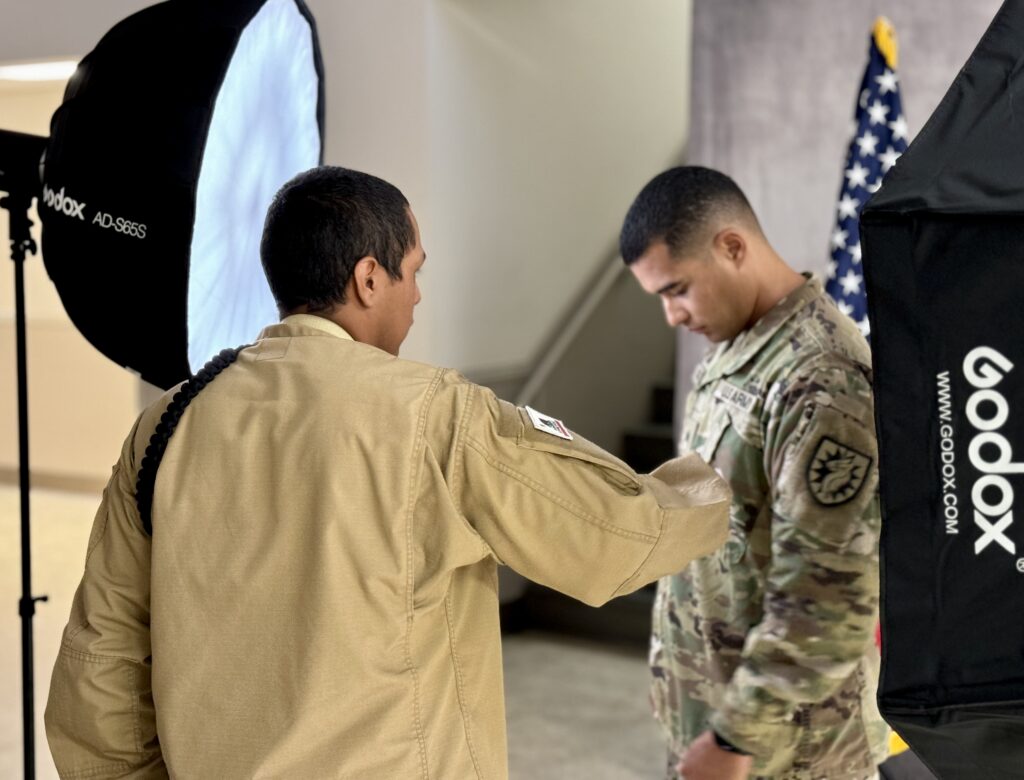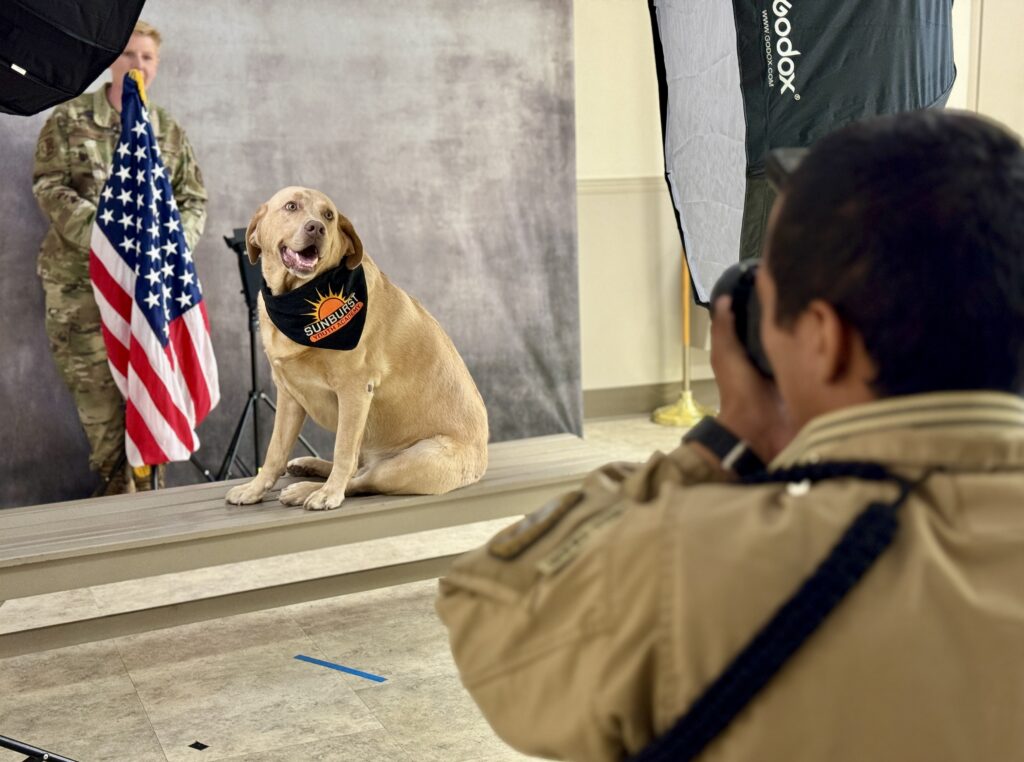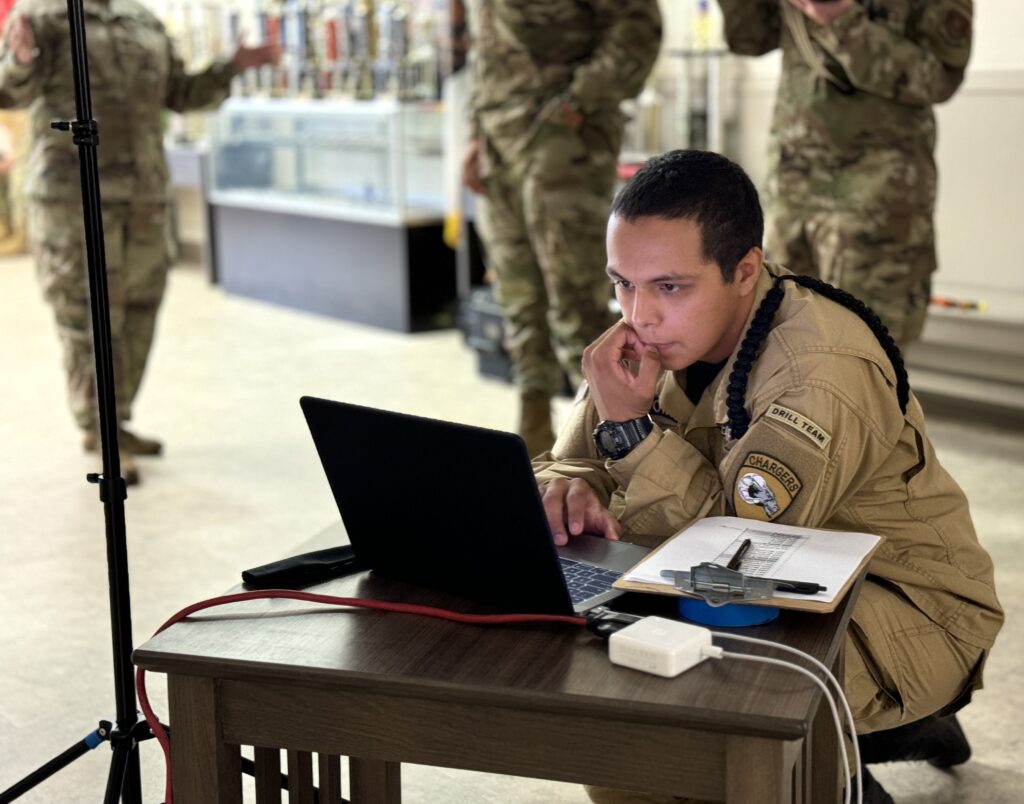“Turn your head a little to the left, and now keep your hands to your side,” graduate Armando Ortega of Class 33 directed one of his former instructors, or cadre members, as he captured his staff portrait. This reversal of roles greatly amused the surrounding group of Sunburst Youth Academy staff, who just months ago were the ones giving Ortega orders.
At Sunburst Youth Academy, located on Joint Forces Training Base, Los Alamitos, the primary goal is to accept struggling, at-risk high school students and set them back on track by instilling the same discipline required of the military. However, with the recent addition of the student media team, Sunburst is providing students like Ortega with an alternative path to a new sense of purpose.
Ortega originally only decided to attend the academy in order to persuade his grandparents to allow him to join the Marines. The 17-year-old had not taken high school seriously and had fallen behind, so attending Sunburst presented a logical compromise: make up missing high school credits while getting a glimpse of what life as a Marine would look like.

From everything he had heard from family and friends, Ortega fully expected Sunburst to be run as a bootcamp, which did not exactly scare him due to his affinity for the Marines. However, it was not long before he began to realize the true value in what Sunburst had to offer.
“When I got here, it was kind of like, ‘This can really help me out,’” Ortega explained. “And it did, because I ended up applying myself more in school, and now I’m getting better grades.”
While the experience was not quite as arduous as he expected, Ortega pointed out the difficulty of spending so much time away from family. For five months, cadets at Sunburst live on base with no cell phones, their only means of communication via the long-lost practice of writing letters. Sunburst’s brand new media team helped Ortega with this transition into independency.
Ortega’s ties with photography
Ortega’s relationship with photography began with his effort to connect with his aunt, who suffers from progressive hearing loss.
“Even though she couldn’t hear me, it’s kind of like a way to visually show that hey, I’m interested in you, I want to know what you used to do and I want to know more about you,” Ortega said.
Photography became an outlet, a means of expressing himself, so when he found out about the media team at Sunburst, he knew he wanted to join. Since Ortega was the only member with prior photography experience, he was naturally counted on for advice and support, a leadership role that he downplayed.

Staff Sgt. Crystal Housman similarly made sure to understate her role as the “facilitator” of the media team, even though she is the only military staff member on the team. Her role at Sunburst focuses on recruiting and digital marketing, along with outreach. She also works as a photojournalist in the 129th Rescue Wing of the California National Guard, and formerly at a daily newspaper within the USA Today network.
While she has accepted the unofficial mantle of media team leader in addition to her other roles, Housman made a point of emphasizing how student-driven the team is and how it never would have come together if not for a small, eager pair of cadets in the prior graduating class.
Media team’s origin
Before an academy field trip to Camp Emerald Bay on Catalina during Class 32, two cadets asked Housman if they could record the experience on camera. The only problem? Cadets aren’t allowed phones, so she lent them her personal GoPro and another small video camera.
As far as content goes, Housman had no expectations and only hoped the cameras would be returned in one piece. Instead, and to her surprise, the two cadets had conducted numerous interviews with fellow cadets about their Sunburst experiences, as well as with Camp Emerald Bay staff about their thoughts on the academy and its volunteer service-centered Catalina trip.
The cadets’ ability to evoke thoughtful and natural responses, let alone their decision to record such a video, impressed Housman and moved her to take action.
“I couldn’t stop thinking about what they did on the boat,” Housman said. “I had to figure out how to enable this.”
The enabling came in the form of two dusty cameras that had not seen the light of day in years. Neither turned on, but with a little cleaning and luck, there was reason for hope.
“Worse case scenario, they spend 30 minutes cleaning a camera,” Housman said. “Best case scenario, they become photographers.”
Sure enough, a simple change of a hidden battery was all that needed replacing, and just like that, the Sunburst Media Team was born.
Since then, the program has grown and branched out. Those first two cameras turned into five, which later led to the addition of news writing, graphic design and web design units after cadets expressed interests outside of photography.
In the team’s first official term of operation, cadets’ videography work helped revitalize the academy’s social media, while multiple publications featured their reporting and photojournalism work. These opportunities have proved invaluable in both the personal and professional development of the cadets.
“By engaging in the production process, students have had hands-on learning opportunities in video production, editing and multimedia storytelling,” Sunburst Youth Academy Principal Dinah Ismail explained. “Students have developed technical proficiency, creativity and collaboration skills, all of which are essential for career readiness. Their work not only highlights the milestones achieved, but also provides a powerful medium for students to reflect on their personal growth and accomplishments.”
As for the upcoming Class 34 media team, a $30,000 grant obtained with the help of OCDE has delivered a variety of professional media equipment, allowing cadets to develop more specialized media skill sets. They will learn camera fundamentals, proper care, basic shooting skills and visual storytelling skills through the production of the academy yearbook and a short film on the cadets’ journey.

Even without this new equipment, Ortega’s involvement with the media team inspired him to apply for a $5,000 small business grant, which he was awarded to start his own photography business. Regardless of whether cadets choose to pursue a career in media, the team’s impact is monumental.
“It will bring future cadets an opportunity to be better, find out what they want to do,” Ortega said. “Maybe this is what they want to do, maybe this will just bring them guidance and show them that they can achieve good things, big things.”
